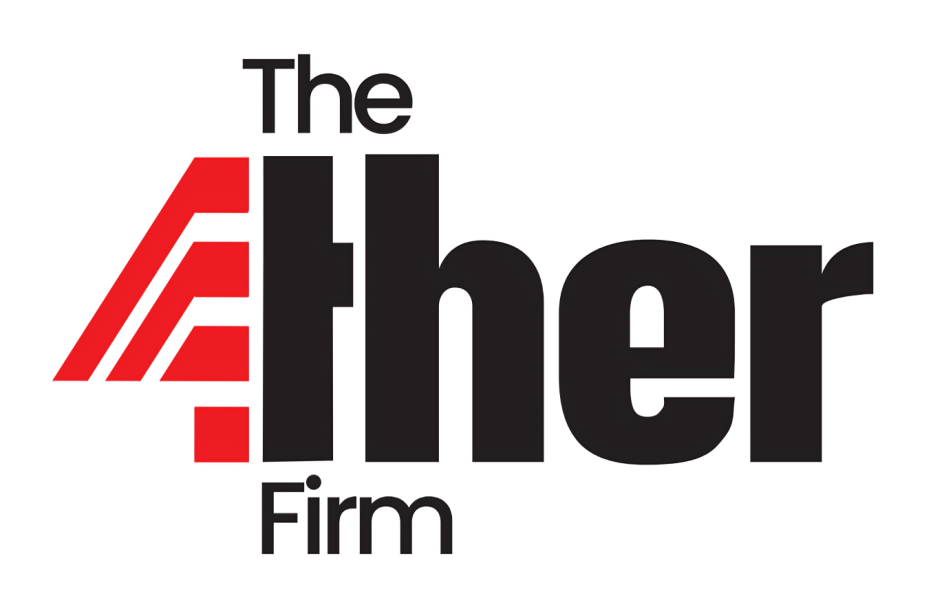
The development funding landscape that sustained African organizations for decades is undergoing fundamental transformation. Traditional bilateral donors are shifting priorities, new funding mechanisms are emerging, and increasingly sophisticated funders are demanding different types of evidence, partnerships, and impact measurement than ever before.
Organizations that continue operating under old funding assumptions risk finding themselves excluded from the resources they need to sustain and scale their work. Conversely, those that understand and adapt to emerging funding realities are discovering unprecedented opportunities for growth and impact.
Through our extensive research and direct engagement with funding ecosystems across Africa, our team has identified five critical shifts that are reshaping how resources flow to development initiatives—and what organizations must do to position themselves for success in this new environment.
Shift 1: From Project Funding to Systems Funding
The Old Model: Funders supported discrete projects with clear start and end dates, specific deliverables, and predictable reporting requirements. Success was measured by activity completion and output delivery.
The New Reality: Increasingly, funders want to support organizational capacity and systemic change rather than individual projects. They’re looking for partners who can demonstrate how specific interventions contribute to broader ecosystem transformation.
What This Means: Organizations must articulate not just what they do, but how their work creates ripple effects that strengthen entire sectors or communities. Proposals need to show how individual projects build toward larger strategic objectives.
Strategic Response: Develop institutional theories of change that connect specific activities to systems-level outcomes. Build partnerships that demonstrate ecosystem thinking rather than working in isolation.
Example: Instead of proposing “a girls’ education program in 10 schools,” successful organizations now propose “a girls’ education model that strengthens community-school partnerships, influences government policy, and can be replicated across 100 schools through local education networks.”
Shift 2: From Donor-Driven to Locally-Led Development
The Old Model: International donors identified priorities and funded organizations to implement predetermined solutions within specific sectors and geographic areas.
The New Reality: The “locally-led development” movement is fundamentally changing how resources are allocated. Funders increasingly prioritize organizations that demonstrate genuine community ownership, local leadership, and culturally appropriate solutions.
What This Means: Organizations must show authentic local leadership, community partnership, and solutions that emerge from rather than impose upon local contexts. Token community engagement is no longer sufficient.
Strategic Response: Strengthen governance structures to ensure meaningful local representation. Develop participatory planning processes that give communities genuine decision-making power. Build evidence of local ownership beyond consultation meetings.
Red Flags Funders Now Avoid: Organizations with primarily international leadership, programs designed without community input, or initiatives that duplicate rather than strengthen existing local systems.
Shift 3: From Reporting Impact to Demonstrating Learning
The Old Model: Organizations reported activities completed and outputs delivered. Impact measurement focused on proving success to justify continued funding.
The New Reality: Sophisticated funders want partners who can demonstrate learning, adaptation, and continuous improvement. They’re more interested in organizations that can explain failures and adjustments than those that claim perfect success.
What This Means: Organizations need robust monitoring systems that capture not just what happened, but what was learned and how that learning influenced subsequent decisions.
Strategic Response: Build learning-oriented measurement systems that track assumptions, document adaptations, and show how organizational approaches evolve based on evidence. Share failures alongside successes as evidence of thoughtful implementation.
New Funding Advantage: Organizations that can demonstrate learning agility are increasingly preferred over those with perfect track records but limited evidence of adaptive capacity.
Shift 4: From Individual Organization Funding to Collaborative Network Funding
The Old Model: Funders supported individual organizations to implement specific programs within their direct service areas or expertise domains.
The New Reality: Many funders now prefer supporting collaborative networks, consortiums, or coalitions that can address complex challenges requiring diverse expertise and coordinated action.
What This Means: Organizations must demonstrate ability to work effectively in partnership, share resources and credit, and contribute to collective impact rather than just organizational growth.
Strategic Response: Build genuine partnership capacity, not just partnership agreements. Develop systems for shared decision-making, collaborative resource management, and joint accountability. Show evidence of successful collaboration beyond formal MOUs.
Partnership Evolution: Move from partnerships of convenience (shared funding applications) to partnerships of necessity (complementary capabilities that create collective value impossible to achieve independently).
Shift 5: From Sector-Specific to Cross-Sectoral Funding
The Old Model: Funding opportunities were clearly categorized by sector—health, education, agriculture, governance—with limited crossover or integration expectations.
The New Reality: Funders increasingly recognize that sustainable development requires integrated approaches that address multiple sectors simultaneously. Climate change, urbanization, and technological disruption demand solutions that span traditional sector boundaries.
What This Means: Organizations must articulate how their work connects to broader development challenges and demonstrate capacity to work across sectors, even if their primary expertise remains focused.
Strategic Response: Develop cross-sector partnerships and demonstrate understanding of how primary interventions affect related sectors. Build capacity to integrate approaches rather than operating in sectoral silos.
Opportunity Identification: The highest-value funding opportunities increasingly exist at sector intersections—health and education, agriculture and climate, governance and technology.
Emerging Funding Mechanisms
Beyond these shifts in funding philosophy, new financial instruments are creating different pathways to resources:
Blended Finance Structures
What They Are: Funding mechanisms that combine grants, loans, and equity investments to de-risk private capital while achieving social objectives.
Who Benefits: Organizations with revenue-generating models or those working with private sector partners on commercially viable social impact initiatives.
Application Strategy: Develop business models that can attract both impact investors and traditional donors. Show clear pathways to financial sustainability alongside social impact.
Impact Bonds and Outcome-Based Funding
What They Are: Funding tied to achievement of specific, measurable outcomes rather than implementation of particular activities.
Who Benefits: Organizations with proven models and strong measurement capabilities who are confident in their ability to deliver specific results.
Application Strategy: Develop precise theories of change with measurable outcomes. Build robust monitoring systems. Start with smaller outcome-based contracts to demonstrate capability.
Catalytic and Flexible Funding
What It Is: Funding designed to support organizational development, innovation, and strategic positioning rather than specific program implementation.
Who Benefits: Organizations with strong leadership and clear strategic vision who need resources for capacity building, research and development, or market positioning.
Application Strategy: Articulate clear organizational development goals. Show how catalytic funding will unlock larger opportunities or enhance organizational effectiveness.
Positioning Your Organization for New Funding Realities
Success in the evolving funding landscape requires strategic positioning rather than opportunistic proposal writing:
Build Institutional Credibility
Elements: Strong governance, transparent operations, demonstrated learning capacity, and evidence of local leadership and community ownership.
Timeline: 12-18 months of consistent effort to establish credibility with funders who prioritize institutional strength.
Develop Strategic Partnerships
Focus: Relationships that create complementary capabilities rather than just shared funding applications. Partners should strengthen your organization’s capacity to address complex challenges.
Approach: Invest time in relationship building before funding opportunities arise. Create joint value propositions that demonstrate collective impact potential.
Strengthen Evidence Generation
Systems: Robust monitoring and evaluation that captures learning, adaptation, and outcome achievement rather than just activity completion.
Capability: Staff capacity to analyze data, extract insights, and use evidence for program improvement and stakeholder communication.
Diversify Funding Portfolio
Strategy: Reduce dependence on single funding sources or mechanisms. Build relationships across different funder types and funding instruments.
Balance: Combine predictable core funding with innovative financing opportunities. Maintain financial stability while exploring new possibilities.
The Competitive Advantage
Organizations that successfully navigate these funding shifts don’t just secure resources—they position themselves as strategic partners rather than service providers. This positioning creates access to larger opportunities, longer-term relationships, and more flexible funding arrangements.
Most importantly, organizations that understand and adapt to new funding realities often find themselves helping to shape those realities rather than simply responding to them. They become the examples that funders reference when describing their preferred partnership models.
Preparing for Continued Evolution
The funding landscape will continue evolving as global priorities shift, new technologies emerge, and lessons from current approaches inform future strategies. Organizations that build adaptive capacity—the ability to understand and respond to changing circumstances—will thrive regardless of specific funding trends.
This means developing organizational cultures that embrace learning, building systems that can adapt to new requirements, and maintaining strategic perspective on how funding serves mission rather than becoming the mission itself.
Our next post will dive deep into research methodologies that African organizations can use to strengthen their strategic positioning, including access to finance research, market analysis, and stakeholder mapping techniques that inform both programmatic and funding strategies.
Ready to position your organization for funding success? The 4ther Firm’s Impact Funding Solutions help organizations understand and navigate the evolving funding landscape while building the institutional capacity that attracts strategic partnerships. Our clients successfully secure diverse funding portfolios that support both immediate programs and long-term organizational development.
Contact our team to explore how strategic positioning and funding diversification can strengthen your organization’s financial sustainability while expanding opportunities for transformative impact.
